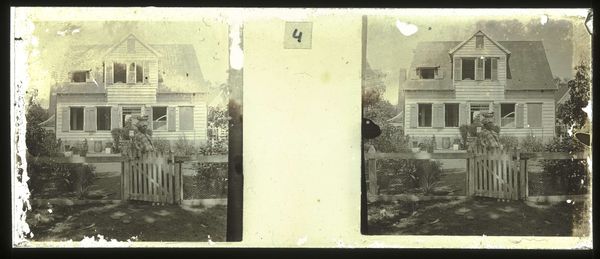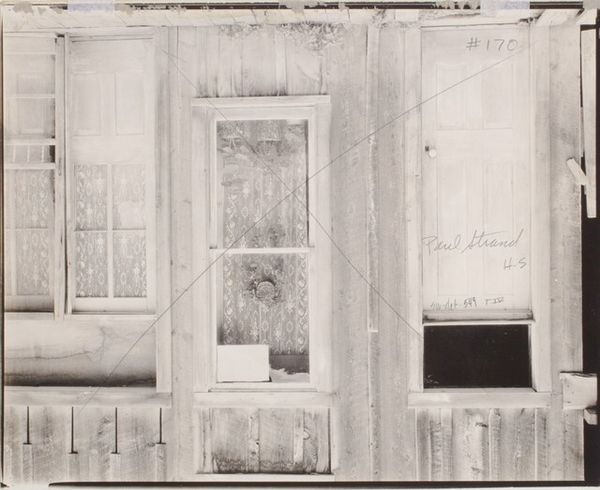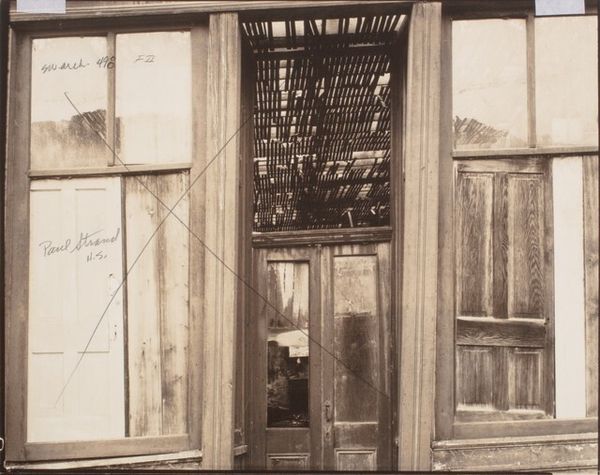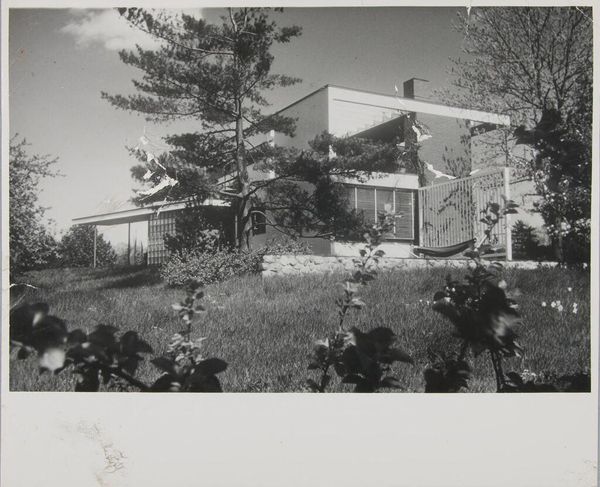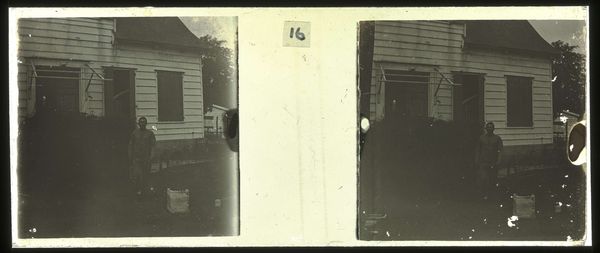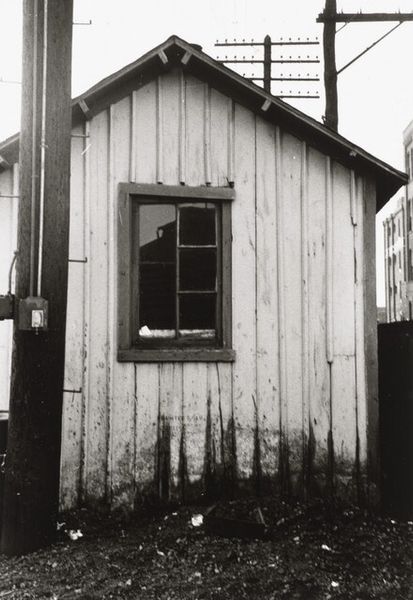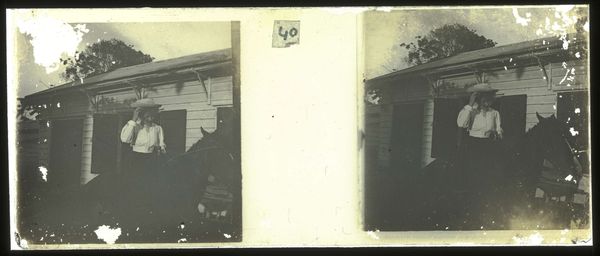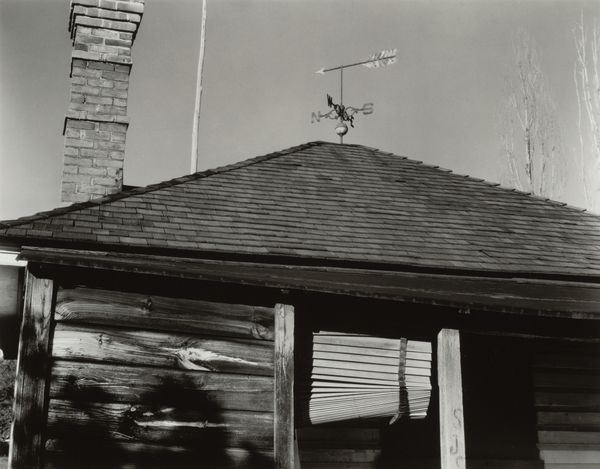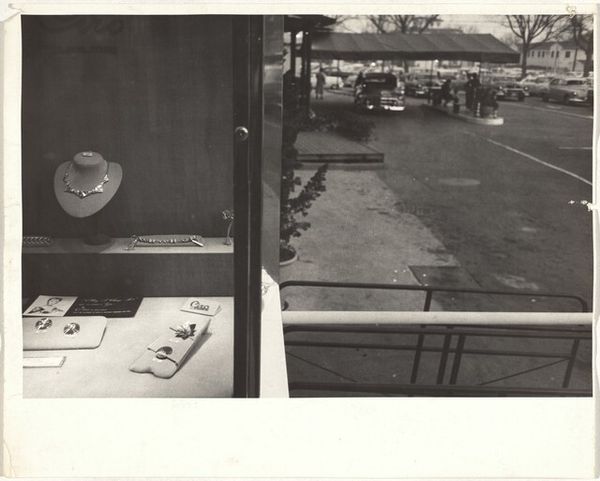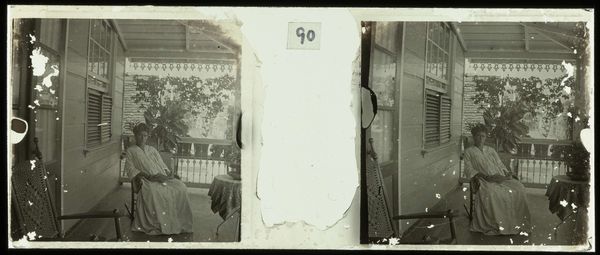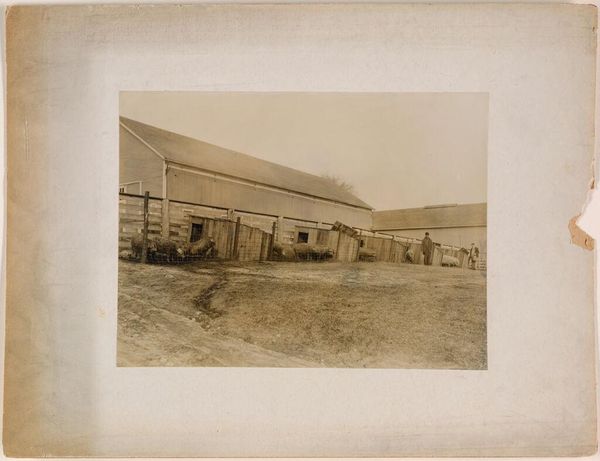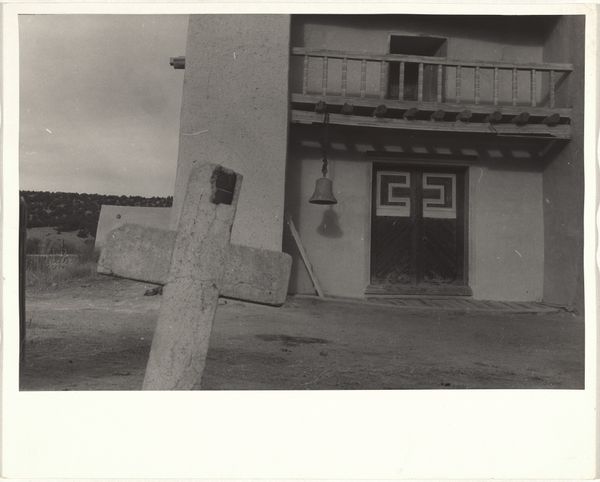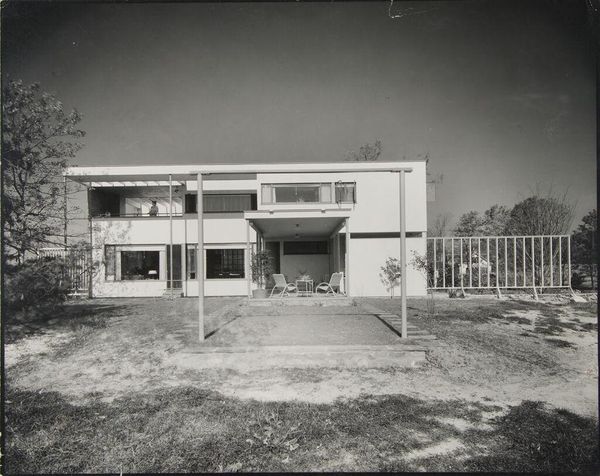
Dimensions: sheet: 20.2 x 25.6 cm (7 15/16 x 10 1/16 in.)
Copyright: National Gallery of Art: CC0 1.0
Curator: This somber, grainy photograph, titled "Westlake, California," was taken by Robert Frank in 1956. There's a house facade; we see a large window with shutters, reflecting the street. Editor: Immediately, the rough texture grabs me, and the slightly blurry image quality. It makes the scene feel melancholic, a bit desolate despite what looks like a typical suburban home. Curator: Well, consider Frank’s broader project—his Guggenheim Fellowship work, that eventually became "The Americans." He was roaming the country, observing, and very consciously crafting a perspective on postwar American society, with a particular eye toward marginalization. The way this print shows visible wear also suggests a history of production, distribution, and its status as a physical object beyond mere reproduction. Editor: Exactly! That grit is part of its power, mirroring the realities he was highlighting: social anxieties and class division under the veneer of idyllic suburban life. The very commonality of the scene becomes sinister under his lens. Who are the inhabitants and how might their home lives, too, become fractured? Curator: It’s a straightforward photographic print but think about the means: camera availability, the cost of film and processing at that time—these are important when examining Frank’s social milieu. The access allowed through the fellowship is crucial to the development of this kind of project. It speaks to modes of production that elevate certain artists above others. Editor: The reflection in the window feels like a ghostly layering. It underscores the tension between what we project—literally—and the darker undercurrents that always lurk in our public spaces. Are the diamond shapes on the shutters meant to look comforting, domestic, or are they empty symbols for an empty kind of aspirational domestic life? The reflection makes it hard to look past such tensions. Curator: Frank challenges notions of objective documentation in street photography, inviting critical discourse around art as a consumable good but also as a cultural artifact, that invites different interpretations over time. Editor: He urges us to consider the visible disparities embedded within a society. It makes me consider how even ostensibly unremarkable subjects—the commonplace home, photographed on a regular day—can expose the larger issues, or ruptures, that define an era. The photo feels deeply unsettling, but profoundly aware.
Comments
No comments
Be the first to comment and join the conversation on the ultimate creative platform.
